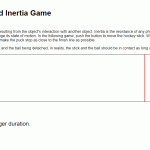Share this
Dealing with math problems can be a challenging task for most children. Countless worksheets filled with numbers, complex formulas, meticulous calculations, can often result in them making errors. While mistakes are a part of learning, too many careless mistakes could impact a child’s confidence and performance. This article aims to provide parents with effective strategies to tackle this issue.
First Off, Practice Is Important
“Practice makes perfect,” as cliché as it may sound, there’s truth in this saying. Regular practice in math can enhance a child’s accuracy and proficiency in solve math problems.
Often, when a child makes mistakes that adults categorize as careless, it could be a sign of their struggle to master the topic. Insufficient practice on certain skills might cause a child to expend mental energy on recalling steps rather than correctly applying them, resulting in frequent mistakes. However, when children get to practice math problems regularly, they can identify patterns and learn from their mistakes. This helps them reduce the chances of repeat the same mistakes. It is important to expose children to plenty of practice to help them develop automaticity, or the capacity to answer questions quickly and accurately without mental exertion. For example, if your child is practicing long division involving 4 digits by 1 digit, encourage your child to practice until they can do them smoothly and quickly without getting stuck in the middle.
What if my child is making mistakes on topics that he/she has long mastered?

Sometimes, a child might make minor mistakes on topics they have long mastered. This can occur during regular practice at home or while taking a test, causing parents to worry as the grades might not accurately reflect their actual capability. There are a variety of reasons for these mistakes, such as rushing, failing to read the question, writing poorly, failing to review their work, or feeling anxious or distracted.
Your child is rushing through the work
One of the biggest reasons children make mistakes in their homework or school tests is not spending enough time reading the questions or doing the calculations. Some children try to finish their homework as quickly as possible. As a result, this lack of attention often means they don’t fully understand the question and don’t spend enough time reflecting whether their approach or solution is correct.
Some children may not have enough time to complete a test. These children may be rushed during school tests, leading them to overlook important details or make missteps in their calculations. As a result, you might see many avoidable careless mistakes in their test results.
Your child is not reading the question
A common issue with many students is that they don’t read the questions carefully. Instead of taking the time to fully understand it, they just glaze over it quickly. This rushed approach often leads them to miss out on very important details that are crucial to giving the correct answer. For example, it’s not uncommon to find a child providing a solution to a problem that was not even asked in the first place. If a question isn’t understood properly, it becomes almost impossible for the child to come up with an accurate solution.
Your child’s writing is too messy
Sometimes, a child’s handwriting can be so messy that they lose track of their own work. This problem often occurs when a child is trying to solve questions that are made up of multiple steps. Moreover, when a child is performing calculations on paper, such as multi-digit multiplication, their messy work can make it incredibly easy for them to misread their previous work and lead to a calculation mistake.
Additionally, if a child’s handwriting is disorganized, they could write digits that they may later misinterpret. For instance, a child could write a “7” in such a messy manner that they may read it as a “1” later on. Similarly, a messy “4” could easily be mistaken for a “9”.
Your child isn’t checking work
Sometimes, calculation mistakes just happen. These errors could arise due to a simple lapse in concentration or for a variety of other reasons. It’s not uncommon – I’ve made Grade 3-level calculation mistakes during university calculus tests that I eventually excelled at. Careless mistakes might naturally occur for some people, both children and adults alike. However, it’s vital that these hiccups not be ignored. They need to be discovered and corrected. If your child is not checking their work, these careless mistakes might be overlooked.
Your child is distracted or is feeling anxiety
Careless mistakes can be rooted in psychological factors. Distractions or lack of concentration can easily lead to a mistake. Similarly, anxiety or feeling pressured can also be primary sources of such mistakes. Adults are not immune to these issues. When we are nervous or overly afraid of making a mistake, we are actually more likely to make mistakes. The same thing can apply to children as well.
Being overly tired or distracted increases the possibility for children to make careless mistakes. Furthermore, a heightened sense of anxiety towards particular activities such as doing a math problem or a test, can also increase the likelihood of careless mistakes.
So, what are the remedies?
Remedy 1: Read the question twice, and jot down key information
If your child has the habit of not reading the question carefully, help them develop the habit of reading the question twice and jotting down the key information.
For example, let’s say your child is doing the following word question.
Alex has a paper route and delivers newspapers for two weeks. In the first week, he delivers 35 newspapers every day from Monday to Friday. In the second week, he delivers 45 newspapers every day from Monday to Thursday and 60 newspapers on Friday. How many newspapers did Alex deliver in total over the two weeks?
Ask your child to do this: Read the question carefully, first. Then, read it again from the beginning. This time, jot down key information on an empty space, not just underlining the details. An example of jotting down the information is as follows:
2 weeks
1st week: 35/day Mon – Fri
2nd week: 45/day Mon – Thur, 60 Fri
Total?
This approach can offer your child with an easily digestible summary of a word question, eliminating the need to constantly review the question. Rather than just underlining keywords, which doesn’t necessarily promote an understanding of the relationship between pieces of key information, jotting down the information forces your child to think about how the pieces of data relate to each other. This active engagement with the text helps your child comprehend and capture the essence of the question.
(Note that creating a diagram can be beneficial for certain types of questions. For geometry questions questions, for example, a drawing or sketch can offer invaluable help. Similarly, if a question involves a lot of data, organizing this information into a table can help with understanding and simplifying the problem.)
Remedy 2: Improve the writing
Math is not a calligraphy class; your child isn’t required to write beautifully, but they do need to make sure that the numbers and letters they write are legible and free from misinterpretations. Identify any written numbers that might be confusing. For instance, if your child’s “7” is often mistaken for a “1”, teach them to make a slash in the vertical part of the “7” for clarify.

Encourage your child to present their work neatly and coherently rather than scattered and disconnected; this will streamline their thinking process. Teach them to keep their work organized, writing from top to bottom and left to right. A lined piece of paper can be of great use. Teach them to write one line per line on the paper for better organization.

For more complicated calculations like long multiplication, your child should do the rough work on a separate piece of paper, not mix it in with the primary work to a problem. This way, the primary work remains unobstructed and clear. Additionally, your child should align their calculations correctly, both vertically and horizontally, to minimize the chances of errors while doing additions or subtractions. If this is a challenge for your child, consider using gridded paper and make sure they only put one number in each grid.

Remedy 3: Develop a habit of checking work
When tackling complex question or longer calculations such as long division, encourage your child to pause after completing the work, take a deep breath, and review their work. Teach them to assume that there is at least one mistake in each question or calculation. Their challenge is to pinpoint that mistake and correct it.
It’s important to reassure your child that it’s perfectly normal for anyone, regardless of being a child or an adult, to make unintentional or careless mistakes. The solution is simple – they just need to double-check their work and make any necessary corrections.
In the context of tests, if your child continually finds themselves not having enough time to check their work, this could point to a lack of sufficient practice. Without ample practice, your child may end up using more time per question, resulting in them not being able to finish the test within the allocated time. If this is indeed the case, try to increase their practice time leading up to the test.
Remedy 4: Develop a methodical approach
The National Council of Teachers of Mathematics emphasizes the importance of promoting a methodical approach to solving math problems. Using the above remedies (Remedy 1 to 3), we can come up with a methodical approach to solving a math question.
Step 1: Read the question twice, then jot down the key information.
Step 2: Plan a solution by looking at the key information.
Step 3: Solve the question by following the plan.
Step 4: Check back the work and make corrections.
Remedy 5: Remove psychological roadblocks
According to a study by the American Psychological Association, children are prone to make fewer mistakes when they are not under pressure or scared of the possibility of making errors. If a child exhibits what is often referred to as ‘math anxiety‘, it is important to approach the issue with a long-term solution. You’ll have to create a positive and encouraging learning environment so that your child can tackle math from a safe space. Don’t be frustrated with mistakes or scold your child; it can reinforce math anxiety. Instead, make sure that your child knows that mistakes are natural part of learning, and help your child reduce mistakes by objectively implementing the Remedies 1 through 4.
If your child exhibits signs of significant nervousness before or during a test, it is possible that they are battling with ‘test anxiety’. This is a debilitating anxiety felt because of a test or exam, and it has the potential to severely impair a child’s performance. There are a number of methods that can be adopted to help alleviate test anxiety, which are explained in this article.
Remedy 6: Have periodic breaks
It’s a common misconception that people can concentrate for hours on end. In fact, research suggests that the majority of people can concentrate only between 10 and 52 minutes at a stretch. This also applies to children, with their concentration capacity often being shorter, sometimes as short as 5 minutes.
In order to improve concentration and reduce the likelihood of careless mistakes, you can implement periodic breaks between study sessions. For example, after your child has done 10 to 15 minutes or work, pause for a minute or two to stretch the legs. Then, your child will come back afresh, with less likelihood of making mistakes.
Similarly, during test situations, it’s a good idea to put in short pauses after answering a couple of questions. Your child can take a moment to breath deeply and clear the mind. This may seem like a waste of precious time, but in the longer run, it may actually save time. Taking a moment to pause minimizes the likelihood of careless mistakes, saving your child from the time-consuming process of erasing and correcting their work.
Conclusion
To sum up, it is important to understand that making mistakes is a natural part of the learning process, particularly with complex subjects like math. However, with the right strategies and a supportive environment, your child can reduce careless mistakes. Implement the various strategies outlined in this article and monitor the result. A method that works with one child may not work with another, so it’s important to do some trial-and-error and figure out what works for your child.
Richard Zhang, M.Ed., is an educator and a software developer with a Masters degree in education from University of Toronto and an immense passion for education and learning. Until the pandemic, Richard owned an award-winning learning centre in Toronto. For 15 years, he has taught and mentored hundreds of elementary, middle school, and high school students succeed in academics. He is also an app developer specializing in web and mobile application in educational and business sectors.











